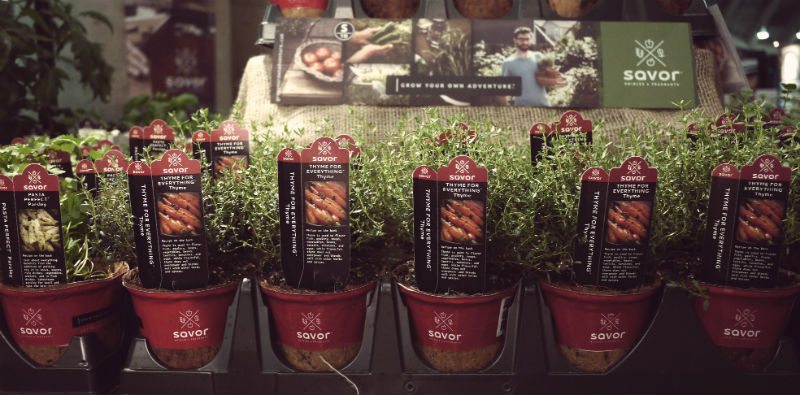
Edibles Impact Goes Well Beyond the Dirt
In the garden scene, edible gardening has been elevated to rock star status. In fact, during the past five years, more Americans than ever — 42 million households — grow their own food in home and community gardens.
A recent report by the National Gardening Association (NGA) found that, while more households are engaged in food gardening, they’ve seen a 25 percent jump in participation in households with children and a whopping 29 percent increase in urban gardening during that time period.
Interestingly, the study also found that while the amount of money consumers spent in many garden categories has stayed the same or declined, vegetable gardening steadily increased.
During that same time period, food garden spending among gardeners aged 25 to 34 has nearly doubled, making garden retailers hungry to capitalize on this growing trend.
This Food Revolution Has Class
“This report clearly shows that there truly is a food revolution taking place in America,” remarks Mike Metallo, president and CEO of NGA.
In response to this shift, many growers, including Pleasant View Gardens in New Hampshire, have developed their own lines of edible products.
To harvest the potential of edibles at your garden center, you need to give edibles a bit more space and attention, and quickly.
Like many garden centers, Hyannis Country Gardens in Massachusetts uses display gardens to show customers how to successfully add edibles to their landscapes.
But Hyannis goes a step further by offering how- to classes, as well.
“We’ve been conducting customer seminars for years, and we’ve got a really solid following,” says Tracy Basset from Hyannis.
Involving the family in the full gardening experience is what Hyannis Country Gardens believes brings more customers to their store.

 But today’s customers want more than just instruction on how to grow plants.
But today’s customers want more than just instruction on how to grow plants.
Once they’ve harvested those succulent tomatoes and other gorgeous veggies and herbs, that’s when the fun really begins.
Today’s successful garden centers should help their customers move beyond the harvest by showing them what comes next.
Whether through cooking demonstrations or hosting harvest food events, retailers can help their customers move beyond simply sticking plants in the dirt, to really grow a relationship with the garden center.
When you show them how to can or preserve their garden bounty, you’ll help them extend their garden experience, and your bottom line will blossom.
“We’ve always done well with edibles,” remarks Sarah Benson, at Benson Lumber & Hardware in Londonderry, New Hampshire.
The family-owned hardware store hosts a “Garden & Grill” event, where they feature a variety of grills, showing customers how to incorporate garden vegetables and herbs into their outdoor meals during the summer months.
For the past two years, Benson Garden Center has planted an edible display garden at its store where its employees enjoy produce from the garden.
Sharing the fruits (or vegetables) of their labor helps get everyone interested and enthusiastic about what’s happening at the garden center, while at the same time making them more effective salesmen and women.
More Than Just the Same Old Veggies
As the trend for artisan foods continues, edibles have moved beyond standard tomatoes and peppers to include a variety of uncommon and interesting plant offerings.
Heirloom vegetables have made resurgence.
Today’s gardeners appreciate the hardiness and adaptability of these open-pollinated veggies, but it’s the wonderfully unique shapes, sizes, colors and flavors that fuel gardeners’ passions for heirloom varieties.
As consumers become even more conscious of where food comes from and how it’s grown, the grow-it-yourself movement has gained tremendous momentum.
In fact, it’s not uncommon these days for urban dwellers to harvest peppers out of patio containers in the summer or lettuce from their window boxes in the colder months.
“We’ve found that our customers want to know what goes into the food they eat,” says Basset. “That’s why so many of our customers choose to grow their own vegetables and herbs, instead of relying on what’s available at the supermarket.”
Space constraints no longer limit gardening aspirations, as plants bred specifically for containers, such as dwarf tomatoes, mini blueberries and raspberries, have hit the scene.
Phillip Roberts at Broadway Gardens in South Portland, Maine, agrees.
“Our customers interests range from patio and container gardening to full- blown vegetable and herb gardens,” he says. “But regardless of what they plant and where they plant it, they want to know what goes into their food.”
Garden centers can tap into this burgeoning market by providing a variety of vegetables, fruits and herbs for specialty cooking, cocktails and home use.
 More Millenials in the Garden
More Millenials in the Garden
This year, according to the U.S. Census Bureau, the Millennial generation is projected to surpass the Baby Boom generation as the nation’s largest living generation.
The NGA report supports this fact, showing that Millennials are, by far, the fastest growing group of food gardeners — increasing by a whopping 63 percent over the past five years.
And as a garden center retailer, it’s crucial to debunk the myth that Millennials are broke.
In fact, Millennials nearly doubled their spending on food gardening during that same timeframe — to an impressive $1.2 billion — and thanks to social media, they have influence over the purchase decision of their families and friends too.
So if your garden center doesn’t create interactions with this group via social media outlets, you’re missing a valuable way to communicate with these key customers.
For Millennials, the process of nurturing seeds and plants into healthy vegetables is only the beginning. This younger, health- conscious generation sees that as only a start to the adventure.
They want to transform their healthy harvest into creative meals and fun experiences.
With a desire to live a healthier lifestyle, growing healthy food ranks high on their list of priorities. But healthy eating isn’t the only benefit of a food garden.
Nathan Keil of Pleasant View Gardens, which recently launched Savor Edibles & Fragrants, concurs, “Millennials aren’t just gardening for beauty, they aim to share their passion for gardening to nourish their communities, the environment and their own well-being in the process.”
Create an Experience, Don’t Just Fill a Hole
More than previous generations, Millennials are more interested in experiences than products; they don’t simply want to put a plant in the soil.
A growing trend within successful retail garden centers is the creation of an edible oasis as a separate destination within their stores.
It’s here they showcase more than plants, integrating lifestyle elements, like cooking, preserving and home décor items in an effort to foster bigger adventures.
By helping customers move beyond the harvest, retailers will create opportunities for customers to build their skills and share their passion with family and friends.
Another way to share the love is by giving back through community gardens.
For example, Benson’s Garden Center works with a local middle school on a community garden. In class, students learn the health benefits of home grown vegetables and
herbs, then Benson’s provides plants and soil amendments and actually assists the students in the planting of their garden.
“It’s a great way to get children interested in learning to garden and growing healthier foods,” says Sarah Benson. “In class, they use what they’ve grown to make kid-friendly foods like salsa, or to make household items like lavender sachets. And they share what they’ve learned with their families, too.”
Broadway Gardens is another good example of community involvement, as it works with local schools, donating plants and growing materials.
Broadway also welcomes class tours at its facility, teaching students how to plant a variety of vegetables and herbs. Students don’t leave empty-handed either, as they take their new plants with them for their school or home gardens.
Broadway is also planting a community garden in conjunction with a nearby church. Providing herb and vegetable plants, soil and expertise on this project, the raised-bed garden will help their neighbors get outside and grow healthy, delicious food.
Produce from the project will then be distributed through the local food bank, bringing the growing experience full circle.
“They’re excited to get outside, get healthy and get growing,” Roberts says.
With food gardening at its highest point in more than a decade, more people than ever are engaged in growing their own adventure.
By creating a destination for edibles at your garden center, you have the opportunity to help build your customers’ knowledge and share their experiences in the community, all while helping your business thrive.



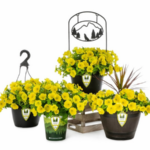


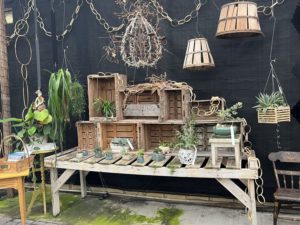
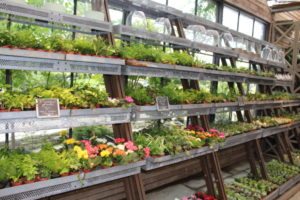
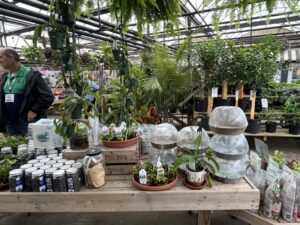

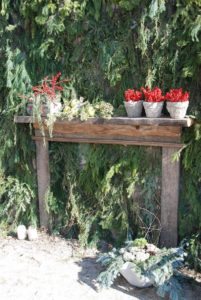
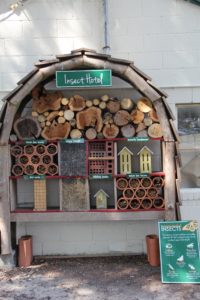

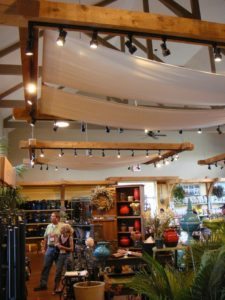
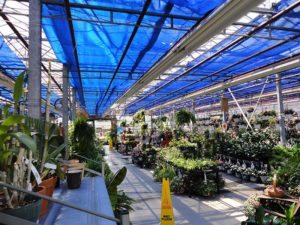

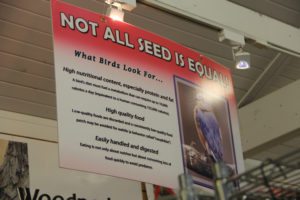
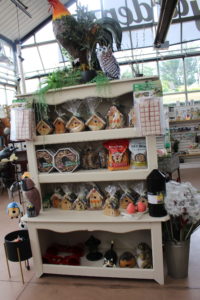
 Videos
Videos





